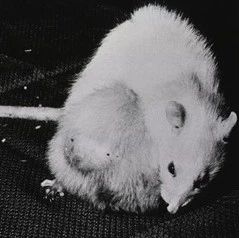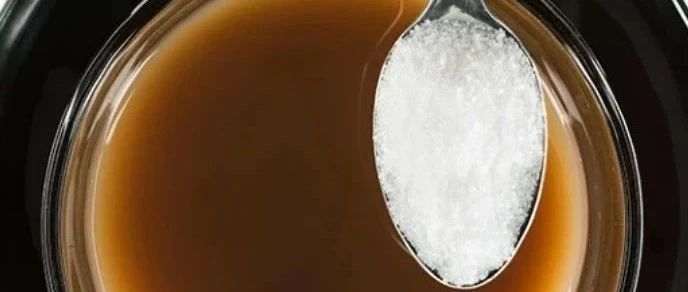
骨髓干细胞对酒精分解物极其敏感
医学研究理事会(MRC)分子生物学实验室的科学家们发现人体“血细胞工厂”即骨髓中的干细胞对于酒精的主要分解产物极其的敏感,会导致对它们DNA不可逆转的损伤。
发表在8月26日《自然》(Nature)杂志上的一项新研究中,研究人员通过小鼠证实机体通常借助两种极其重要的机制来制止这种损伤:一种酶负责清除有毒分解产物(乙醛),一组蛋白质识别和修复损伤DNA。缺乏这两种保护机制的小鼠会因为血液干细胞的破坏导致骨髓衰竭。
这些研究发现第一次提供了解释患有罕见遗传疾病范可尼贫血(Fanconi anemia)的患者会骨髓衰竭原因。患有这一疾病的患者遗传了一个或多个FA基因的突变,导致可修复乙醛造成DNA损伤的“修复工具包”失活。因此,FA患者具有发育缺陷、骨髓衰竭和极高的血液和其他癌症的风险。
如果在人类中得到重复,这些研究结果对于全球约2500万具有酒精引起的“亚洲人脸红综合征”( Asian flush syndrome)的人群也可能具有重要意义。这些个体缺乏一种清除有毒乙醛的酶ALDH2,有可能因此对DNA损伤异常地敏感。作者们认为这些人群摄入酒精有可能导致对他们血液干细胞的永久伤害,提高他们的血癌、骨髓衰竭和加速衰老的风险。
领导这一研究的是医学研究理事会分子生物学实验室的KJ Patel博士。KJ Patel说:“血液干细胞负责提供我们整个生命周期连续不断的健康血细胞供应。随着衰老,这些重要的干细胞因为损伤DNA的累积而变得不那么有效。我们的研究确定了这一DNA损伤的一个关键的根源,并确定了干细胞用于对抗这种威胁的两种保护性机制。”
“去年我们发表了一篇文章,证实没有这种双重保护,酒精分解产物对血液是极其有毒的。我们现在精确确定了这些DNA损伤发生在何处,这是非常重要的,因为它意味着酒精不仅是杀死了健康的循环细胞,它也会逐渐破坏血细胞工厂。一旦这些血液干细胞受损,它们有可能导致白血病,当它们耗尽时它们不能被替换,导致了骨髓衰竭。”
“这些结果有可能对于诸如中国等亚洲国家的广泛人群尤其重要,在那里多达三分之一的人群有ALDH2酶缺陷。这些个体摄取酒精有可能使他们的FA DNA修复工具包超负荷,引起对血液干细胞不可逆的损伤。其长期的后果可能是骨髓功能障碍和血癌发生。
医学研究理事会分子生物学实验室主任Sir Hugh Pelham说:“该研究提供了对于破坏性儿童疾病范可尼贫血基础生物学一个非常探索性的解释。在未来这一工作有可能成为这一当前预后较差的遗传性疾病新治疗的基础。它也有助于告知全球那些有ALDH2酶缺陷的广泛人群喝酒有可能对于他们的DNA造成无形的伤害。”

 Genotoxic consequences of endogenous aldehydes on mouse haematopoietic stem cell function
Genotoxic consequences of endogenous aldehydes on mouse haematopoietic stem cell function
Juan I. Garaycoechea,Gerry P. Crossan,Frederic Langevin,Maria Daly,Mark J. Arends& Ketan J. Patel
Haematopoietic stem cells (HSCs) regenerate blood cells throughout the lifespan of an organism. With age, the functional quality of HSCs declines, partly owing to the accumulation of damaged DNA1, 2, 3. However, the factors that damage DNA and the protective mechanisms that operate in these cells are poorly understood. We have recently shown that the Fanconi anaemia DNA-repair pathway counteracts the genotoxic effects of reactive aldehydes4, 5. Mice with combined inactivation of aldehyde catabolism (through Aldh2 knockout) and the Fanconi anaemia DNA-repair pathway (Fancd2 knockout) display developmental defects, a predisposition to leukaemia, and are susceptible to the toxic effects of ethanol—an exogenous source of acetaldehyde4. Here we report that aged Aldh2−/− Fancd2−/− mutant mice that do not develop leukaemia spontaneously develop aplastic anaemia, with the concomitant accumulation of damaged DNA within the haematopoietic stem and progenitor cell (HSPC) pool. Unexpectedly, we find that only HSPCs, and not more mature blood precursors, require Aldh2 for protection against acetaldehyde toxicity. Additionally, the aldehyde-oxidizing activity of HSPCs, as measured by Aldefluor stain, is due to Aldh2 and correlates with this protection. Finally, there is more than a 600-fold reduction in the HSC pool of mice deficient in both Fanconi anaemia pathway-mediated DNA repair and acetaldehyde detoxification. Therefore, the emergence of bone marrow failure in Fanconi anaemia is probably due to aldehyde-mediated genotoxicity restricted to the HSPC pool. These findings identify a new link between endogenous reactive metabolites and DNA damage in HSCs, and define the protective mechanisms that counteract this threat.
文献链接:Genotoxic consequences of endogenous aldehydes on mouse haematopoietic stem cell function






